Access to Collaboration Site and Physics Results
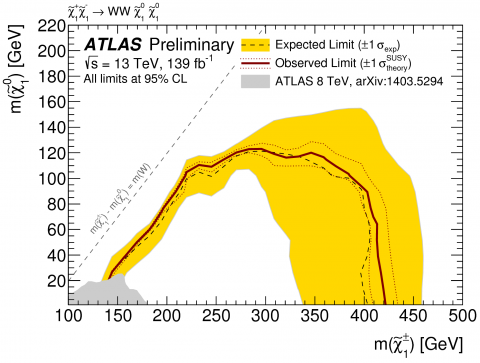
ATLAS sets strong constraints on supersymmetric dark matter
– One of the most complete theoretical frameworks that includes a dark matter candidate is supersymmetry. Dark matter is an unknown type of matter present in the universe, which could be of particle origin. Many supersymmetric models predict the existence of a new stable, invisible particle - the lightest supersymmetric particle (LSP) – which has the right properties to be a dark matter particle. The ATLAS Collaboration has recently reported two new results on searches for an LSP where it exploited the experiment’s full “Run 2” data sample taken at 13 TeV proton-proton collision energy. The analyses looked for the pair production of two heavy supersymmetric particles, each of which decays to observable Standard Model particles and an LSP in the detector.Read more →
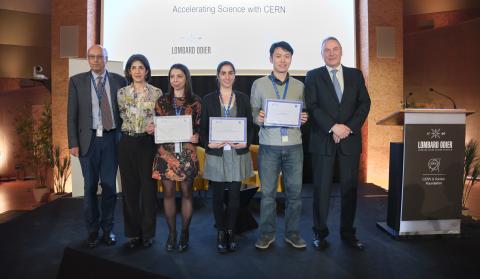
Celebrating the recipients of the 2019 ATLAS PhD Grant
– At an award ceremony in the Globe of Science and Innovation, the recipients of the 2019 ATLAS PhD Grant were celebrated in the presence of CERN & Society donors and members of the ATLAS community. The ATLAS PhD Grant has supported up-and-coming talents in particle physics since 2014 and this year saw a new donor take up its cause.Read more →

Highlights from Moriond: ATLAS explores the full Run 2 dataset
– This week, particle physicists from around the world gathered in La Thuile, Italy, for the annual Rencontres de Moriond conference on Electroweak Interactions and Unified Theories. It was one of the first major conferences to be held following the recent completion of the Large Hadron Collider’s (LHC) second operation period (Run 2). The ATLAS Collaboration unveiled a wide range of new results, including new analyses using the full Run 2 dataset, as well as some high-profile studies of Higgs, electroweak and heavy-ion physics.Read more →
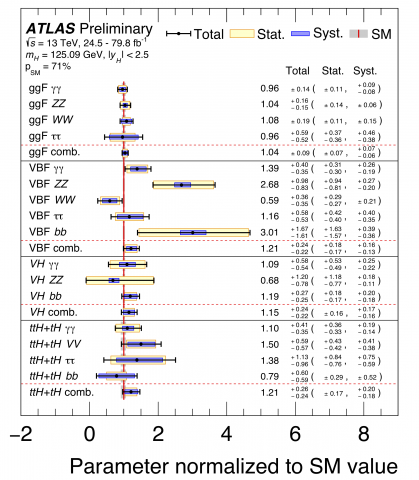
All together now: adding more pieces to the Higgs boson puzzle
– The Higgs boson was discovered in 2012 by the ATLAS and CMS experiments, but its rich interaction properties (its coupling to other particles) have remained a puzzle. Thanks to an unprecedented amount of Higgs bosons produced at the LHC, all of the main Higgs boson production and decay modes have now been observed.Read more →

ATLAS measures Higgs boson coupling to top quark in diphoton channel with full Run 2 dataset
– At the Rencontres de Moriond (La Thuile, Italy), the ATLAS Collaboration presented an updated measurement of ttH production in the diphoton channel. The result examines the full Run 2 dataset – 139 fb-1 collected between 2015 and 2018 – to observe ttH production in a single channel with a significance of 4.9 standard deviations.Read more →
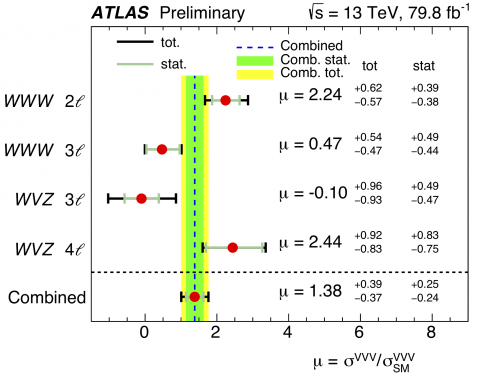
ATLAS finds evidence of three massive vector boson production
– Today, at the Rencontres de Moriond conference (La Thuile, Italy), the ATLAS collaboration released evidence for the simultaneous production of three W or Z bosons in proton–proton collisions at the Large Hadron Collider (LHC). The W and Z bosons are the mediator particles of the weak force – one of the four known fundamental forces – which is responsible for the phenomenon of radioactivity as well as an essential ingredient to our Sun's thermonuclear process.Read more →
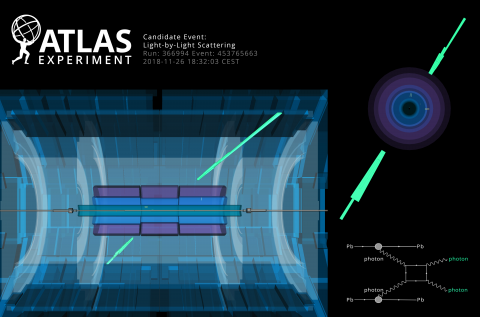
ATLAS observes light scattering off light
– Light-by-light scattering is a very rare phenomenon in which two photons – particles of light – interact, producing again a pair of photons. The ATLAS Collaboration has reported the observation of light-by-light scattering with a significance beyond 8 standard deviations.Read more →
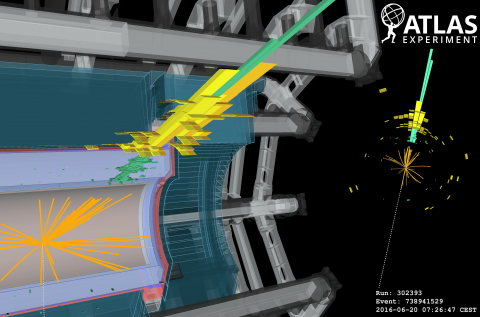
Searching for Dark Matter with the ATLAS detector
– When we look around us, at all the things we can touch and see – all of this is visible matter. And yet, this makes up less than 5% of the universe.Read more →
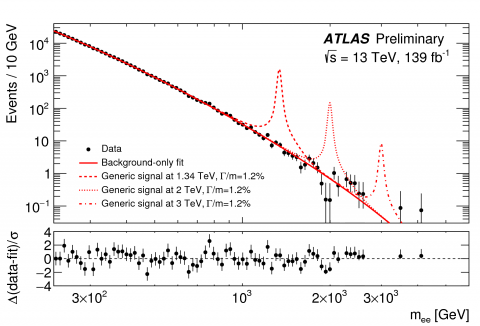
First ATLAS result with full Run 2 dataset: a search for new heavy particles
– Could a Grand Unified Theory resolve the remaining mysteries of the Standard Model? If verified, it would provide an elegant description of the unification of SM forces at very high energies, and might even explain the existence of dark matter and neutrino masses. ATLAS physicists are searching for evidence of new heavy particles predicted by such theories, including a neutral Z’ gauge boson.Read more →
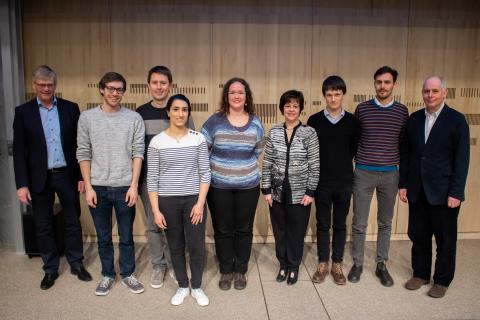
ATLAS honours six new Thesis Award winners
– On Valentine’s Day 2019, the ATLAS Collaboration took a break from the usual rhythm of scientific discussion to showcase some of its most junior members. In a celebration in CERN’s Main Auditorium, the collaboration held its 10th annual ATLAS Thesis Awards.Read more →




